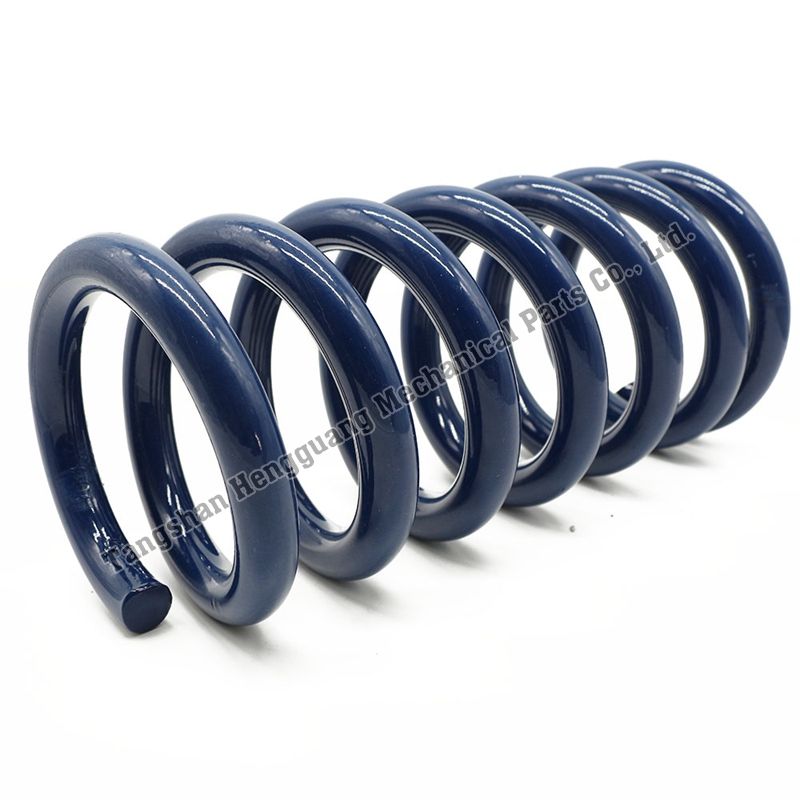Your Position: Home - Hardware - Compression Spring Vs Tension Spring
There are different types of springs. Compression springs, torsion springs, spiral springs, and tension springs are the most common springs to be named. Two of the most common types are compression and tension springs. Both are an integral part of different industries like automobiles, smartphones, electrical appliances, etc. These springs lie under the category of helical coiled springs. However, there are significant differences between both that distinguish them.
Based on these differences, both springs offer different features with different functionalities. In short, tension springs are closely connected to multiple components. On the other hand, compression springs maintain a significant distance between them. This article will present a thorough comparison between compressions springs and tension springs.
Tension Springs
Tension springs are a type of coil springs. These are closely-wounded coil springs to keep the components hooked together. They enable the tension load to stretch. This stretch then keeps the objects hooked together by exerting a force between them.
Products like levers, catches, and brakes are prominent examples of the use of tension springs. Industries such as automobiles and heavy industries use tension springs for different purposes. Moreover, tension springs are also used in garage doors for counterbalancing, in trampolines for storing energy that pulls back the surface to its original position, and in the farming industry.

Compression Springs
In contrast to tension springs, compression springs work oppositely to keep the components away from each other. Compression springs become shorter in length when the load is applied. However, it repels back against the applied force and gets back to its original position as soon as possible. This working mechanism is utilized in different domains to avoid the collision of components.
Suggested reading:Different industries and domains make huge use of compression springs. Products and parts like actuators, suspensions, dampers, and valves are incomplete without compression springs. Apart from that, compression springs are available in every household. Compression springs are present in pens, smartphones, clocks, door handles, lawnmowers, electrical appliances, etc. One of the main reasons for compression springs’ heavy utilization is the availability of different shapes and designs. Compression springs are available in cylindrical, conical, reduced ends, and hourglass shapes to work efficiently according to the requirement.
Which material is used in the manufacturing of compression and tension springs?
Although the functionality of both springs is opposite to each other, both can still be manufactured with the same material. However, there are different materials for manufacturing compression and Heavy Duty Tension Springs.
This variety is available because there are different factors involved in it such as temperature, probability of rust, and the level of stress. Due to these factors, both springs use stainless steel, cold drawn wire, titanium alloys, bainite hardened strip, hardenable spring steel, Cold drawn and cold rolled low-alloy steel, and copper alloys for manufacturing.
Both these springs are contradictory to each other in terms of functionalities, yet they offer great services in different domains.
1475
0
0
Comments
All Comments (0)
Related Articles
CNC Milling Services: Precision Manufacturing for Your Unique Needs
In today's advanced manufacturing landscape, precision is paramount. When it comes to creating intricate parts and components with exceptional accuracy, CNC milling services have become an indispensable solution. Computer Numerical Control (CNC) milling utilizes automated machinery to precisely shape and cut various materials, enabling the production of complex and customized parts.
By Hou
500
0
0
What Are The Key Design Considerations for Plastic Injection Molding?
Plastic injection molding is a widely used manufacturing process that allows for the mass production of intricate plastic parts with high accuracy and consistency. However, designing parts for injection molding requires careful consideration of various factors to ensure that the final product meets the required specifications and can be produced efficiently. In this article, we will explore the key design considerations for plastic injection molding.
By Ingrid
503
0
0
What are the advantages of Belleville springs?
Belleville springs, also known as disc springs or conical washers, are a type of mechanical spring that offers a range of advantages for various engineering applications. These springs are widely used in industries such as aerospace, automotive, defense, manufacturing, and more.
By May
478
0
0
Choosing the Right Window Screen Material
Window screens play an essential role in our homes, providing protection against insects while allowing fresh air and natural light to enter. When it comes to selecting the right window screen material, there are several factors to consider. From durability to visibility and maintenance, each material has its advantages and disadvantages.
By CC
492
0
0
The Essential Guide to Roller Bearing Applications: Maximizing Efficiency and Performance
Roller bearings play a crucial role in various industries, providing efficient and reliable rotational motion to countless applications. From automotive and aerospace to manufacturing and heavy machinery, roller bearings are indispensable components that ensure smooth and precise operation.
By CC
487
0
0
Advantages of SPS Compared to Conventional Methods
SPS is a typical field-assisted sintering technique that can achieve fully dense pressed billets using low processing temperatures and short sintering times. SPS furnaces can densify ceramics in minutes, whereas hot pressing and pressureless sintering require several hours to achieve the same sintering density.
By CC
531
0
0
Why Are Non-Sparking Tools Required?
Office safety and security have turned into one of the significant worries of the production industry. When it has to do with preventing work-related risks, particular needs must be satisfied, especially in ATEX-identified areas. One of the demands that must be taken care of is using precision hand tools.
By CC
502
0
0
A Guide to Choosing Explosion Proof Motors
While there are many different types of motors on the market, it is still especially important for any business to have an explosion proof motor, especially if there are any hazardous locations around the warehouse.
By CC
557
0
0